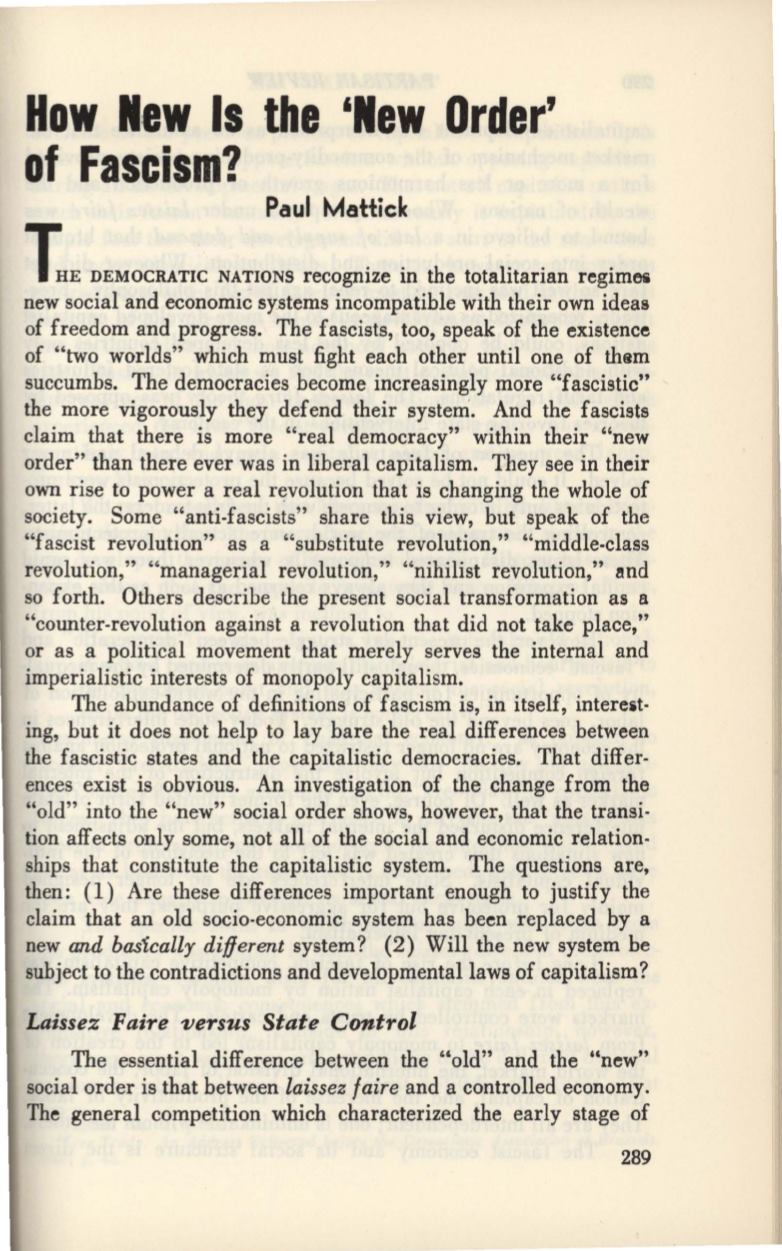
How New Is the 'New Order'
of
Fascism?
Paul Mattick
1.
DEMOCRATIC NATIONS
recognize in !he totalitarian regim..
new social and economic systems incompatible with their own ideas
of freedom and progress. The fascists, too, speak of the existence
of "two worlds" which must fight each other until one of thsm
succumbs. The democracies become increasingly more "fascistic"
the more vigorously they defend their systeni. And the fascists
claim that there is more "real democracy" within their "new
order" than there ever was in liberal capitalism. They see in their
own rise to power a real revolution that is changing the whole of
society. Some "anti-fascists" share this view, but speak of the
"fascist revolution" as a "substitute revolution," "middle-class
revolution," "managerial revolution," "nihilist revolution," and
so forth. Others describe the present social transformation as a
"counter-revolution against a revolution that did not take place,"
or as a political movement that merely serves the internal and
imperialistic interests of monopoly capitalism.
The abundance of definitions of fascism is, in itself, intereit–
ing, but it does not help to lay bare the real differences between
the fascistic states and the capitalistic democracies. That differ–
ences exist is obvious. An investigation of the change from the
"old" into the "new" social order shows, however, that the transi·
tion affects only some, not all of the social and economic relation–
ships that constitute the capitalistic system. The questions are,
then: {l) Are these differences important enough to justify the
claim that an old socio-economic system has been replaced by a
new
and bas"ically different
system? {2) Will the new system be
subject to the contradictions and developmental laws of capitalism?
Laissez Faire versus State Control
The essential difference between the "old" and the "new"
social order is that between
laissez faire
and a controlled economy.
The general competition which characterized the early stage of
289


